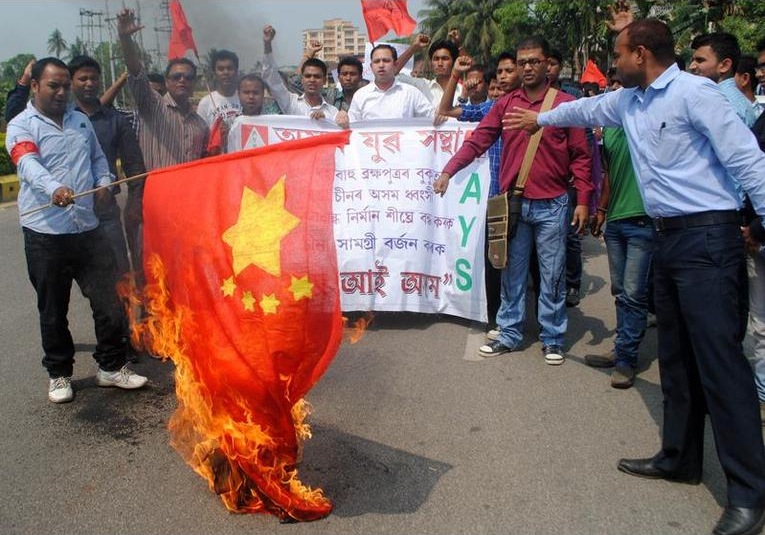
> Portfolio > The Brahmapoutra
The new Indo-Chinese hydroelectric dam war.
With little concern for environmental or human risks, China and India have engaged in a race to build hydroelectric dams on the Brahmaputra (1,800 miles long) and its tributaries, in efforts to generate great amounts of electricity. India is worried about China’s construction of the first 510 MW dam in Zhangmu, followed by three others in the same river stretch in Tibet. In the media, the Indian government and the Governor of Arunashal Pradesh state - bordering with Tibet - denounced a dry-out of the river and accused their Chinese neighbor. An Indian nationalist even went so far as to burn a Chinese flag in Guwahati in Assam. From the outside world, everything seems to point to China attempting a water resource monopoly.
Though once onsite in India, the situation reveals itself to be much more complex. The government approved the construction of a 2,700 MW dam in Rottung and the Low Subansiri (2004) in Arunashal Pradesh, the first in a long series - more than 150 are planned. In total, India plans to generate more than 50,000 megawatts of electricity by 2020, thus producing 10 % of the overall energy needs of the entire country, though sadly with little to no consideration for the local population. Citizens’ voices rose when the company in charge of the dam construction gifted alcohol and even opium to local tribal residents, who thus became addicts and therefore didn’t come to public hearings disputing construction of the dam. Arunashal Pradesh has typically been isolated from the outside world and has only been open for a few years to Indians, as technically still claimed by China. Leaders have emerged, like Keshoba Chatradhara « Bhai » in Assam and Egul Padung in Arunachal Pradesh, who have set up roadblocks and organized street protests denouncing corruption and destruction of their ancestral land for the sake of dam and road constructions. In addition, the risk of flooding and erosion are substantial, downstream of dams. According to activist Egul Padung, the dam will release three times per day about 3500 m3/s (cubic meters per second) over the course of 2 years... a major threat of damage for surrounding farms and crops.
Tribal populations in Arunashal Pradesh (Adi Minyong, Idu-Mishmi,…) will of course gain electricity and roads which enable more business, thus providing jobs for young people, but often this also leads to serious environmental and social issues (prostitution, drugs,…).
Perhaps the only positive development of the dams may be a regulation in Assam of the destructive floods of the Brahmaputra river, which erode Majuli every year. This island, the largest river island in the world, has already lost 70% of its size in the last 100 years. According to experts, Majuli might disappear in the next 15 to 20 years and thus lose its famous unique Hindu monasteries, the Satras.
There remains another major problem: neither China nor India seem to care about Bangladesh and its water share from the Brahmaputra before it runs into the Indian Ocean. After all these dams are built, how much water will remain for one of the world’s poorest countries, already suffering from rising ocean levels? The future looks dark for Bangladesh, especially with the construction of the « border wall » by its neighbor, India.
IMPORTANT:

Photo: Biju Boro
All kind of images surface on the internet. True ones, false ones. Real or fake. Like this image found on the web showing Indians burning a Chinese flag. Once checked on location, it is in fact a propaganda demonstration, whose goal is to enforce the building of dams against an imaginary enemy, and make it easier for the Indian population to accept the project.